Volume 44, Issue 8
DVRPC Awarded $1.47 Million for Regional Vision Zero 2050 Action Program
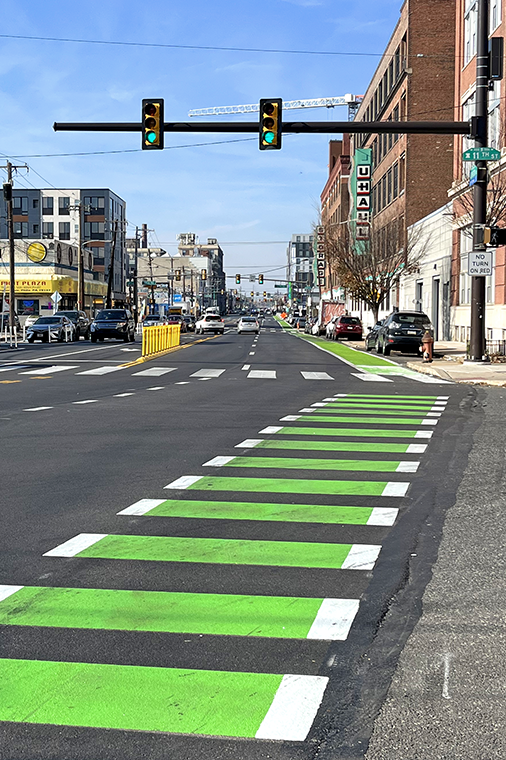
On February 1, U.S. Transportation Secretary Pete Buttigieg announced a historic $800 million in grant awards for 510 projects through the new Safe Streets and Roads for All (SS4A) Grant Program, a record amount of funding to improve roads and address traffic fatalities. DVRPC was awarded $1.47 million for its Regional Vision Zero 2050 Action Program. This was a regional effort, with all nine counties in the DVRPC region included as subrecipients of the award.
DVRPC and its partners will create a safety action program to advance the Connections 2050 Long-Range Plan Regional Vision Zero 2050 goal with a process designed to strengthen ongoing regional collaboration toward eliminating crash fatalities. In addition to required plan elements like a regional High Injury Network, DVRPC will review recently-completed and forthcoming county and local plans for inclusion in the regional plan–possibly qualifying them for future SS4A implementation grant rounds.
Also as part of this grant, Upper Darby Township will hire a consultant to study the 69th Street Transportation Center area seeking to improve road safety and access for the pedestrians, bicyclists, and motorists using the center. Reimagining the existing pedestrian bridge is a top municipal priority.
The SS4A competitive grant program, established by the 2022 Infrastructure Investment and Jobs Act (IIA), provides a total of $5 billion to be awarded over five years for regional, local, and Tribal initiatives. These initiatives will range from redesigned roads to better sidewalks and crosswalks with the intended outcome to prevent deaths and serious injuries on the nation’s roadways.
Board Approves FY24 Work Program
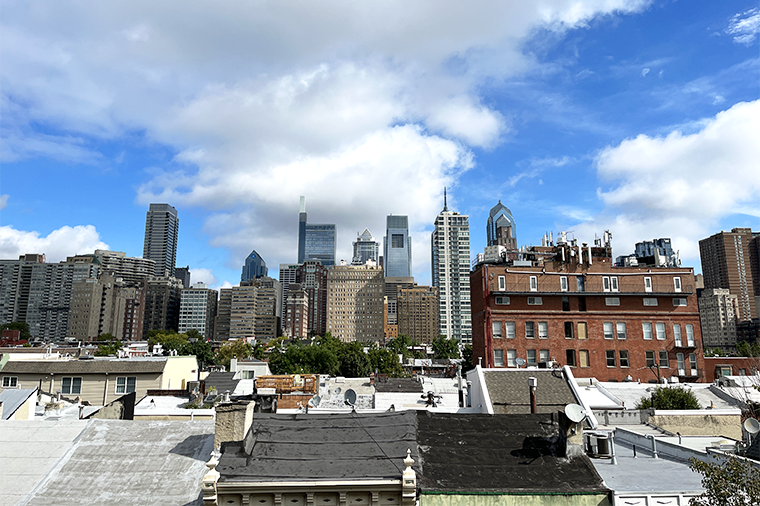
The DVRPC Board approved the Fiscal Year (FY) 2024 Unified Planning Work Program at its January 26, 2023 meeting. This document outlines DVRPC’s planning projects and programs for the nine-county region from July 1, 2023 to June 30, 2024.
The Work Program reflects policy direction and input from state and federal planning partners, member governments, operating agencies, and other regional organizations. Sample regional planning projects for the upcoming year include: Transportation Planning for Disadvantaged Communities, Carbon Reduction Program, 2025 On-Board and Household Travel Survey Planning, Economic Development District Program, Increasing Safe and Accessible Transportation Options, and SEPTA Regional Rail Station Planning. See all projects in the Work Program at www.dvrpc.org/workprogram.
How We Can Support Safe and Welcoming Trails Webinar
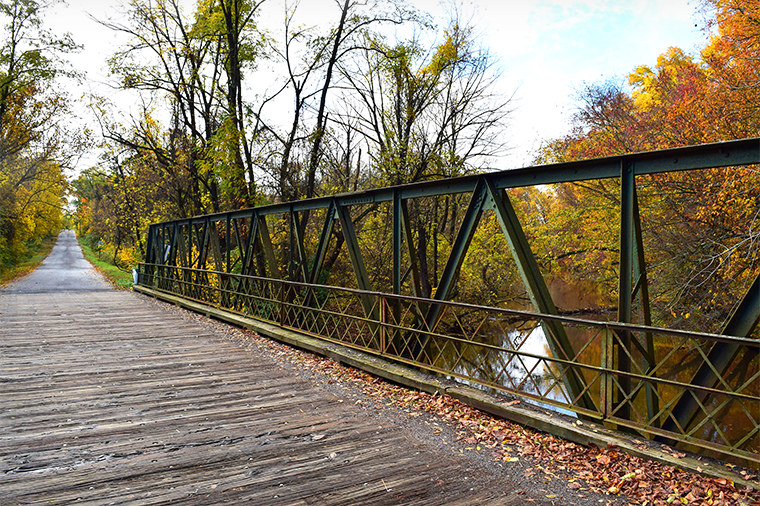
Join us on Thursday, February 9, from 10-11:30 am for a webinar on “Community Safety by Design: How We Can Support Safe and Welcoming Trails,” a joint meeting of DVRPC’s Healthy Communities Task Force and the East Coast Greenway Alliance. The webinar will explore how the built environment and intentional programming can create and support trail safety. Brittain Storck, ASLA, PLA, Principal with Alta Planning + Design and Board of Trustees Member with the East Coast Greenway Alliance will present on supporting trail safety through environmental design. After the presentation, Shawn Megill Legendre, Manager of DVRPC’s Regional Trails Program, will facilitate a panel discussion on supporting safe and welcoming trails in our region with guest speakers Julie Slavet of the Tookany/Tacony-Frankford Watershed Partnership; Eleanor Horne, formerly of the Lawrence Hopewell Trail; and Nicole Seahorn Hameen of the Fairmount Park Conservancy. Register to attend.
FY24 NJ TCDI Funding Round Opens February 16
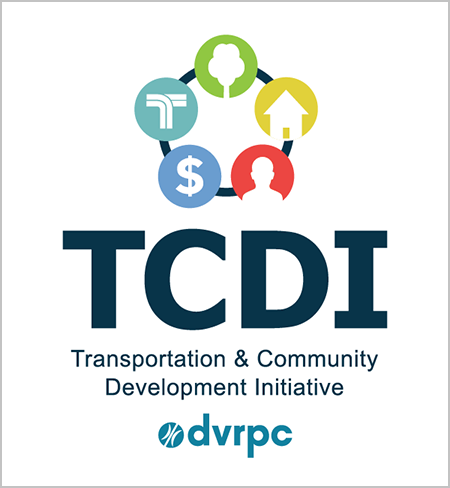
On February 1, 2023, DVRPC announced the Program Guidelines for the FY2024 New Jersey round of its Transportation & Community Development Initiative (TCDI) grant program. The application portal will be open from February 16 through April 28, 2023.
TCDI supports smart growth initiatives that implement the region’s long-range plan, Connections 2050, and enhance the multimodal transportation network. Up to $600,000 may be available this round. Unlike in years past, a local match is no longer required.
All eligible applicants in the four-county New Jersey area of the DVRPC region are encouraged to attend an informational webinar on February 15. Register to attend the webinar. Direct any questions or concerns to Spencer K. Gober, Associate Manager, Office of Community and Economic Development, at sgober@dvrpc.org.
The Pennsylvania TCDI program will be available in 2024.
Infrastructure Investment and Jobs Act Update
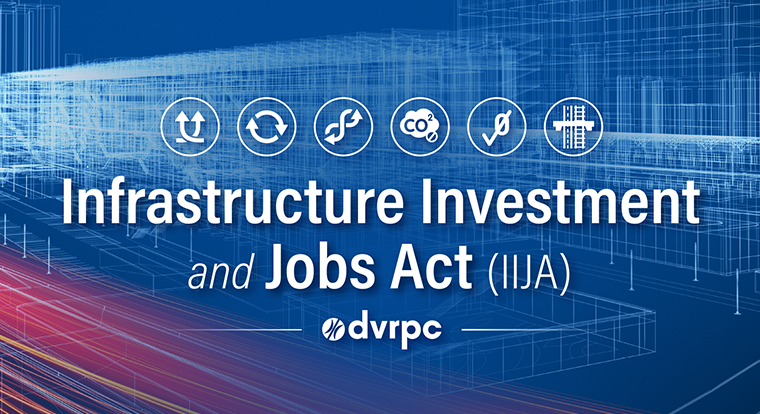
New resources to assist local governments with 2023 IIJA grant applications are available on the DVRPC IIJA webpage. They include:
- USDOT Fiscal Year 2023 Discretionary Grant Preparation Checklist for Prospective Applicants - Prepare for the year ahead, and chart a strategic pathway to take advantage of historic infrastructure investments.
- USDOT Historically Disadvantaged Community Mapping Tool - Use this interactive tool to identify Transportation Disadvantaged Census Tracts.
- DVRPC GIS Mapping Assistance Request Form - Use this form to request GIS and mapping assistance from DVRPC.
- DVRPC Grant Letter of Support Request Procedure - Request a letter of support from DVRPC for your project.
DVRPC may be able to assist local governments in applying for competitive grants. Visit the IIJA webpage for more information, or use this form to request a consultation. To receive periodic emails about Notice of Funding Opportunities associated with the IIJA, please sign up for our email list. If you have questions, contact Sean Greene, Manager, Office of Freight and Clean Transportation, at sgreene@dvrpc.org.
Local Open Space Funding Programs 2022 Election Update
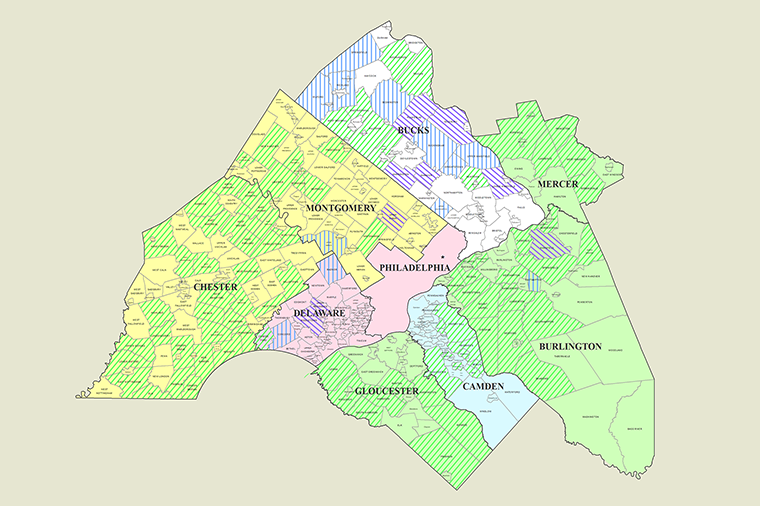
Since the late 1980s, communities throughout the region have embraced efforts to preserve their remaining open space as a means of protecting natural resources, providing for recreational opportunities, and shaping local development by establishing local open space funding programs through voter referendums. As these efforts have escalated over time, DVRPC began tracking them in 1999 as a way to share best practices, highlight success stories, and increase support for open space preservation. Since the 1980s, 123 of the region’s 352 municipalities voted to establish local open space funding programs. Over time, some programs have expired, but as of 2022, 113 programs remain active, the highest number of active programs at any one time.
In 2022, six communities within the DVRPC region–two in Pennsylvania and four in New Jersey–voted on referendums to create or amend dedicated funding programs to protect open space in the November 8 general election. Three of these measures passed which will enable these communities to realize their open space preservation goals. One community in Pennsylvania, West Sadsbury Township, proposed to discontinue their open space tax as they had succeeded in their preservation goals and no longer required the funding; this referendum passed.
Learn more about the election outcomes and view the inventory of active locally funded open space programs on the Local Open Space Funding Programs webpage.
DVRPC is Hiring
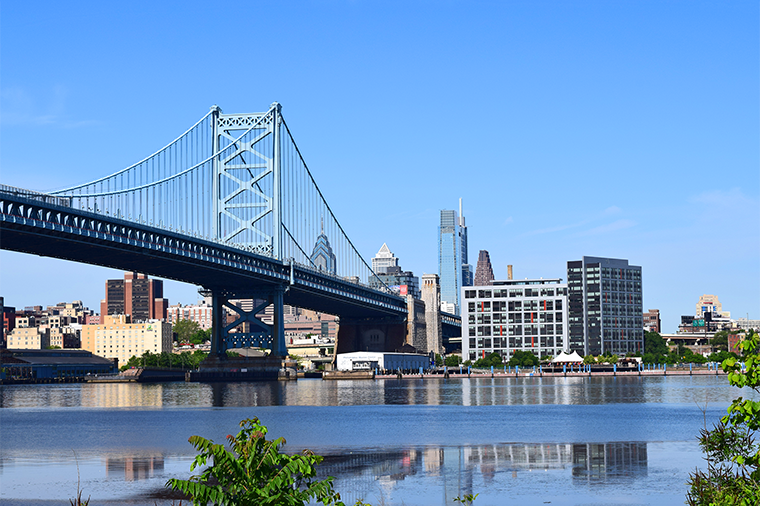
DVRPC is currently hiring for several full-time positions:
- Transportation Modeler/Analyst
- Procurement and Contracts Senior Specialist
- Capital Project Planner
- Meeting and Administrative Coordinator
Visit DVRPC's Jobs webpage to view job descriptions and find the most up-to-date information.
Recent Publications and Resources
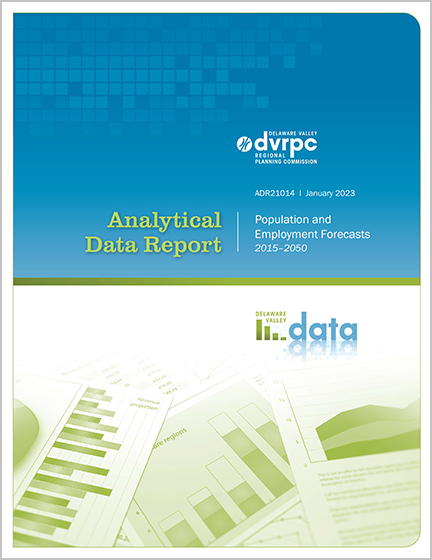
Data Navigator Update - DVRPC’s Data Navigator has been updated with demographic, economic, housing, and social data from the 2017-2021 5-year American Community Survey (ACS). Data is available at the county or municipal level.
Population and Employment Forecasts 2015-2050 - This report presents DVRPC’s adopted 2050 county- and municipal-level population and employment forecasts and describes the method used to develop them. Population and employment forecasts are a critical component of long-range land use and transportation planning. As a part of DVRPC’s long-range planning activities, the Commission is required to maintain forecasts with at least a 20-year horizon, or to the horizon year of the long-range plan. DVRPC last adopted forecasts through the year 2045 in 2016. Referenced as the 2050 v1.0 forecasts, as the first to use that horizon year, the population and employment totals were formally adopted by the DVRPC Board on June 24, 2021, and serve as the basis for DVRPC planning and travel modeling activities.
Improving Access to the Hunting Park Broad Street Line Station - The Hunting Park Broad Street Line Station is a critical transportation asset for the North Philadelphia neighborhoods of Nicetown, Tioga, East Tioga, Hunting Park, and Logan. DVRPC conducted this planning study to identify potential improvements that will make traveling in the area surrounding the Hunting Park Broad Street Line Station easier and safer. This study was undertaken to address pedestrian safety concerns near the station and to help prepare for Phase B of SEPTA’s Boulevard Direct Service. Boulevard Direct is a high-frequency, limited-stop bus service that currently operates along portions of Roosevelt Boulevard. Phase A opened in 2017 and runs between Frankford Transportation Center and the Neshaminy Mall. SEPTA is now planning for the extension of this service along the southern portion of Roosevelt Boulevard and along Hunting Park and Ridge avenues, including a station located at Broad Street.
Vision Zero: Cecil B. Moore Avenue - This project was funded by the City of Philadelphia as part of Vision Zero, an effort to eliminate traffic fatalities by 2050. Cecil B. Moore Avenue is a dangerous arterial roadway in North Philadelphia with a history of severe crashes. The study area for this project stretches from Willington Avenue to 10th Street along Cecil B. Moore Avenue. The study team conducted extensive neighborhood outreach, research on existing planning efforts, a road safety audit, and a crash and traffic analysis, all of which indicated the need for safety improvements on the corridor. The team produced a series of recommendations aimed at improving safety, mobility, and community vitality for all users of the street. The recommendations were presented to a steering committee made up of city government and community members, as well as to the public during a pop-up event hosted at a local community center.
Upcoming Online LTAP Classes in PA and NJ

The Local Technical Assistance Program (LTAP) provides technical information and expertise to help municipal governments use transportation funds more effectively, improve road maintenance, and increase roadway safety. Classes are held by Pennsylvania and New Jersey LTAP programs, but are open to any municipality.
Upcoming classes:
Erosion and Sedimentation Control
Virtual
February 14, 2023 (8:00 am - 12:00 pm)
Traffic Control Coordinator Refresher
Virtual
February 16, 2023 (8:00 am - 12:00 pm)
Visit Rutgers Center for Advanced Infrastructure and Transportation to see the 2022 schedule of LTAP courses in New Jersey.
Visit PennDOT's LTAP website to view the course descriptions and register. For any questions, contact Linda McNeffer at lmcneffer@dvrpc.org or 215-238-2872.
DVRPC maintains a calendar of events, workshops, and conferences hosted by our partners and related to planning for Greater Philadelphia. Visit our Partner Calendar to learn more.
Staff Profile: Ariella Maron, Executive Director
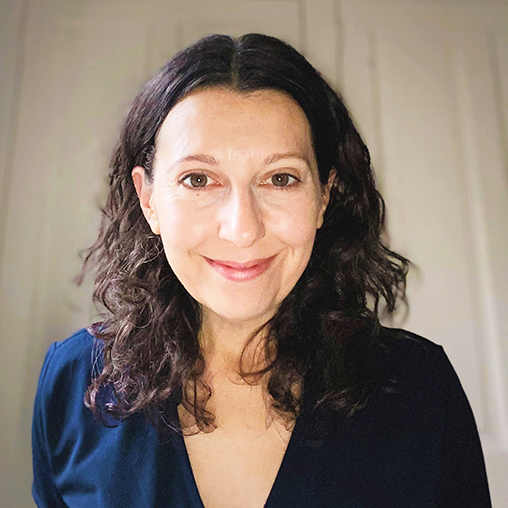
What did you want to be growing up? I went through a phase where I wanted to be an architect, but not because I actually knew what an architect did, but because I thought Elyse Keaton from Family Ties was really cool. When I was in middle school and high school, because I liked math and economics, I was convinced I would do something in business. It wasn’t until I was an undergrad that I learned about urban planning, a field that would allow me to bring my interests in economics and environmental protection with my love of cities.
What was your first job? Starting at fifteen and all through high school, I worked as a waitress. My first job after college was as an analyst at an economic consulting firm that focused on energy and the environment. My first job in urban planning was as a city planner in the Bronx Office of the NYC Department of City Planning.
Why did you want to become the next Executive Director of DVRPC?
I wanted to become DVRPC’s Executive Director to help realize its goals for a more equitable, resilient, and sustainable region.
The Greater Philadelphia region has a rich history, a thriving economy, diverse communities, and beautiful open and natural areas. Yet, the region also has a myriad of interconnected systemic issues. It has aging and out of date infrastructure. It has a history of land use and housing policies that have propelled sprawl and intensified inequality. Economic and technological changes are altering the way we live, work, and move, altering all of our downtowns and suburban office parks. Changes to the climate threaten to exacerbate the impact of all these other challenges. Meeting these challenges–and thriving in the face of them–requires new approaches to collaboration, governance, and funding.
Regional planning organizations, like DVRPC, are well positioned to facilitate these new approaches given their ability to act on behalf of a collective of local governments, connect them to state and federal funding and other resources, and think beyond political boundaries. DVRPC is already building these new models and demonstrating the impact a regional planning organization can have to make change. This is why I wanted to be the next Executive Director: to help facilitate the type and scale of change necessary to meet today’s challenges. I believe that DVRPC has been creating the necessary foundation for that change, and I feel privileged to have the opportunity to work with staff, the Board, and partners across the region to continue to scale its impact.
How would others describe you? I think many people would describe me as a strategic, big-picture thinker. They would also say that I am optimistic yet practical, process-oriented,and very, very passionate. I also hope they would say that I am accessible, fair, and kind.
What is your favorite leisure activity? Besides time with my family playing games, skiing and hiking, I love running, especially on trails or in the mountains, followed by a big breakfast and hot coffee.
What is the last book you read? I’m in the process of reading The Overstory: A Novel by Richard Powers. With young kids, I haven’t had a lot of time for reading, so it is taking me a while to get through it. I’ve become very dependent on podcasts. I mostly listen to really wonky news ones like The Daily or Vox’s Today: Explained, but I am open to any recommendations .
What are you most looking forward to over the next year? I am looking forward to meeting everyone on the staff and learning more about their projects. I’m looking forward to meeting and visiting all of our Board members and partner community organizations. I’m really excited to plan and launch a nine-county tour of our region. Even though I have been here for over a decade, I want to see the region through the lens of staff, Board members, and partners to better understand what makes each corner of this region special; where challenges are particularly acute; and how we can utilize our resources and new opportunities to address them.